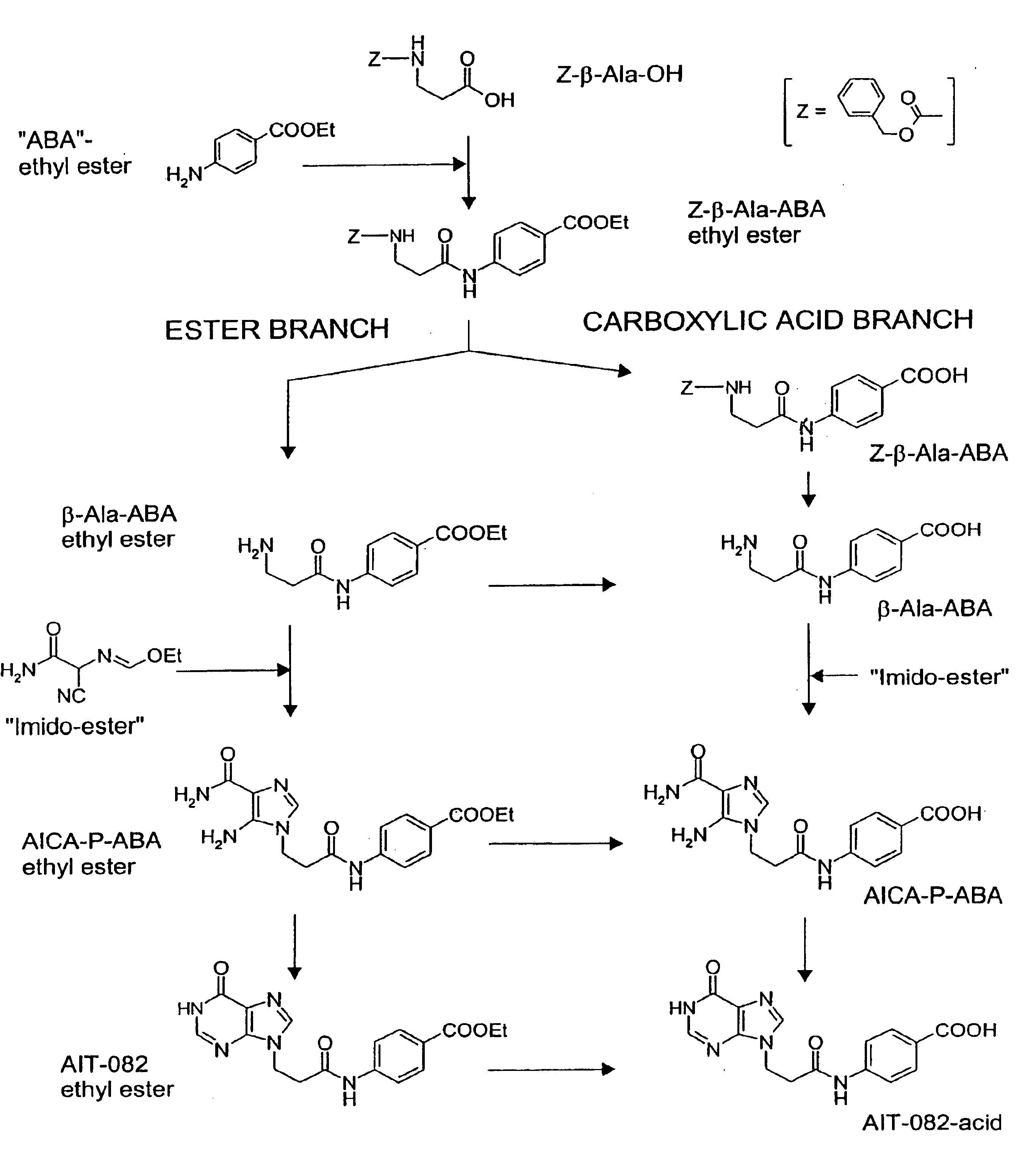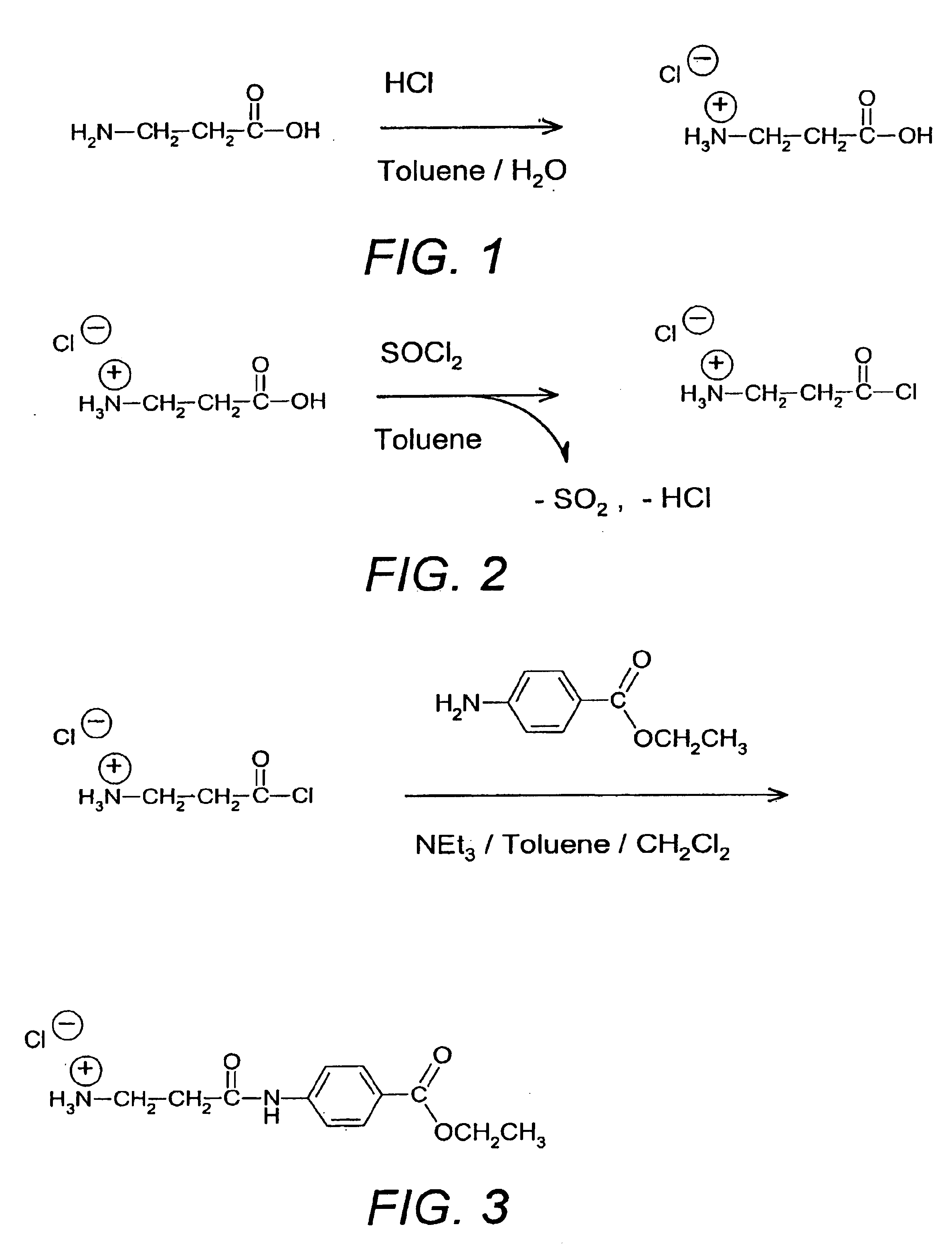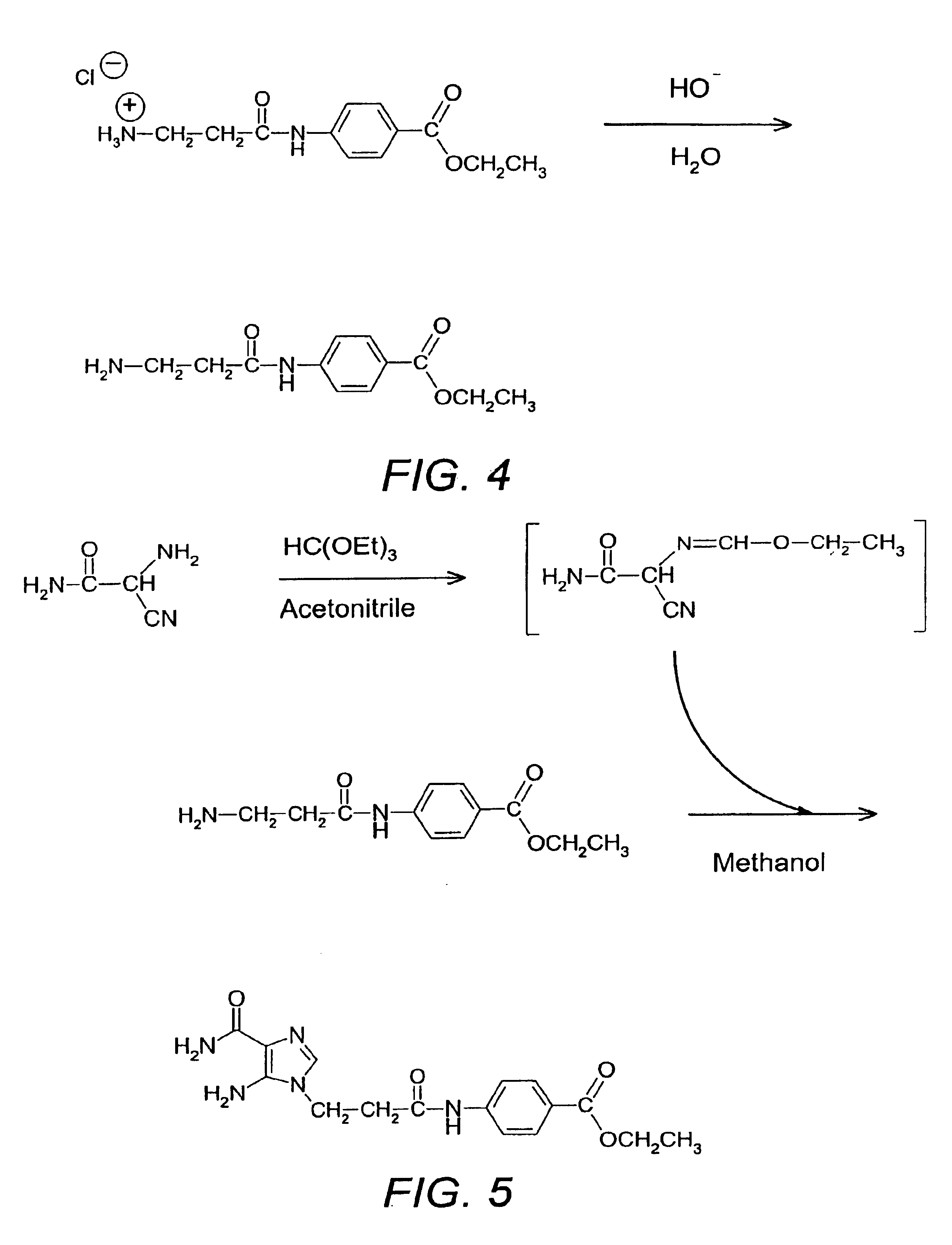Methods of synthesis for 9-substituted hypoxanthine derivatives
a technology of hypoxanthine and derivatives, which is applied in the field of synthetic methods for 9-substituted hypoxanthine derivatives, can solve the problems of reducing the therapeutic usefulness of adenosine analogues and their relationship to cognitive function previously unrealized
- Summary
- Abstract
- Description
- Claims
- Application Information
AI Technical Summary
Benefits of technology
Problems solved by technology
Method used
Image
Examples
example 2
Conversion of β-Alanine Hydrochloride to its Acyl Chloride Hydrochloride
Thionyl chloride (8.026 kg, 67.41 mol) was slowly added to the thick white suspension of Example 1 under vigorous stirring (strong gas formation). After 1 h the reaction mixture was heated up to a jacket temperature of 50° C. (gentle gas formation) for 38 h.
Unreacted thionyl chloride and toluene (weight reduction 8.905 kg) were distilled off under vacuum (50° C., 100 mbar) to yield the acyl chloride hydrochloride.
example 3
Condensation of Acyl Chloride Hydrochloride with p-Aminobenzoic Acid Ethyl Ester
A solution containing p-aminobenzoic acid ethyl ester (1.850 kg, 11.22 mol) and triethylamine (1.14 kg, 11.22 mol) in dichloromethane (11.87 kg) was slowly added (47 min) to the slightly yellow suspension of the acyl chloride hydrochloride from Example 2 at a temperature of 45-55° C. and the reaction mixture was stirred overnight (17 h) at a jacket temperature of 400° C. (reaction control by HPLC). The product was isolated by filtration (400° C.), washed 3 times with dichloromethane (3×2.64 kg) and dried under vacuum at 40° C. overnight. The yield was 3.937 kg of P-alanyl-p-aminobenzoic acid ethyl ester hydrochloride (80.37% of theoretical corrected) HPLC yielded 62.5% w / w, 98.22% area. Some triethylamine hydrochloride precipitates together with the product and causes a crude weight of greater than 100% of theoretical. The triethylamine hydrochloride does not interfere and is eliminated in the next step ...
example 4
Conversion of Ester Hydrochloride to Ester by Neutralization
The ester hydrochloride from Example 3 (2.000 kg, 4.58 mol) was dissolved in water (18.0 kg) and ethanol (2.0 kg). The acidic pH of the solution (pH 0.54) was adjusted to pH 10.0 by addition of sodium hydroxide (30% NaOH, 1059.2 g, 7.94 mol). The crystallization process starts spontaneously at pH 9.7 and a thick and hardly stirrable slurry was obtained. After dilution (500 g) with a mixture of water / ethanol (9: 1, w / w) the thick suspension was stirred for 2 h at room temperature. The β-alanyl-p-aminobenzoic acid ethyl ester was isolated by filtration, washed twice (2×1.0 kg) with water / ethanol (9:1 w / w) and dried under vacuum at 40° C. overnight. The yield was 1.100 kg of ethyl ester, 106.9% of theoretical corrected. HPLC yielded 105.20% (w / w), 99.34% area. The assay corrected yield was greater than 100% of theory probably due to non-homogeneous hydrochloride.
PUM
| Property | Measurement | Unit |
|---|---|---|
| temperature | aaaaa | aaaaa |
| temperature | aaaaa | aaaaa |
| temperature | aaaaa | aaaaa |
Abstract
Description
Claims
Application Information
 Login to View More
Login to View More - R&D
- Intellectual Property
- Life Sciences
- Materials
- Tech Scout
- Unparalleled Data Quality
- Higher Quality Content
- 60% Fewer Hallucinations
Browse by: Latest US Patents, China's latest patents, Technical Efficacy Thesaurus, Application Domain, Technology Topic, Popular Technical Reports.
© 2025 PatSnap. All rights reserved.Legal|Privacy policy|Modern Slavery Act Transparency Statement|Sitemap|About US| Contact US: help@patsnap.com



